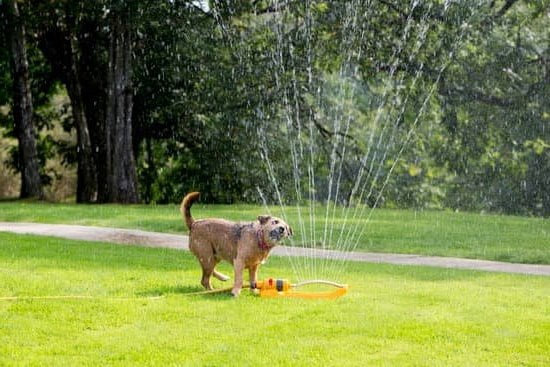Are you considering training your dog at home? Dog training at home can be a rewarding and beneficial experience for both you and your furry companion.
Understanding your dog’s behavior, setting up a successful training environment, and incorporating positive reinforcement are just a few key elements to consider. In this article, we will explore the various benefits of training your dog at home, essential training techniques for basic commands, and how to address common behavioral issues in a home setting.
Training your dog at home offers numerous advantages. Not only does it allow for personalized attention and tailored training plans specific to your dog’s needs, but it also fosters a strong bond between you and your pet. By gaining insight into your dog’s behavior and needs, you can create a consistent training schedule that suits both of you. Additionally, managing distractions and challenges in a familiar environment can lead to more effective learning opportunities for your dog.
Understanding your dog’s behavior is crucial when it comes to successful training at home. By recognizing their needs and individual personality traits, you can effectively implement appropriate training techniques. Setting up a conducive training environment is also paramount.
Creating a space that minimizes distractions and promotes positive learning experiences is key to achieving desired results in dog training at home. Stay tuned as we delve deeper into understanding your dog’s behavior and setting up the ideal training environment for success.
Understanding Your Dog’s Behavior and Needs
When it comes to training your dog at home, it is crucial to have a good understanding of your dog’s behavior and needs. Each dog is unique and may respond differently to training methods, so it is important to take the time to observe your dog’s behavior and learn about their specific needs.
Here are some key points to consider when understanding your dog’s behavior and needs:
- Observe your dog’s body language and vocalizations to understand their emotions and reactions.
- Take note of what triggers certain behaviors in your dog, such as barking, jumping, or anxiety.
- Consider your dog’s breed characteristics and temperament, as these can influence their behavior and training requirements.
By understanding your dog’s behavior and needs, you can tailor your training approach to better suit them, leading to a more successful training experience.
It is also important to recognize that every dog has basic needs that must be met in order for them to thrive. These needs include physical exercise, mental stimulation, social interaction, and a sense of security. By addressing these needs in conjunction with their behavioral tendencies, you can create a well-rounded training program that considers the whole wellbeing of your furry friend.
Setting Up a Successful Training Environment at Home
Training your dog at home can be a rewarding experience for both you and your furry friend. Setting up a successful training environment at home is crucial in ensuring effective and consistent training. Here are some tips on how to create the perfect training environment for your dog:
- Designate a specific area for training: Choose a quiet and comfortable space in your home where you can work with your dog without distractions. This could be a living room, backyard, or any area where you can easily focus on training.
- Use the right equipment: Invest in essential training tools such as a leash, collar, clicker, treat pouch, and possibly agility equipment if you’re interested in advanced training. These tools will help you effectively communicate with your dog and reinforce positive behaviors.
- Minimize distractions: When starting out with training, it’s important to minimize distractions as much as possible. Turn off the TV, radio, or any other noises that could divert your dog’s attention away from the training session.
By creating a dedicated space for training and using the right equipment, you can set the stage for successful dog training at home.
Remember to always remain patient and consistent during your dog’s training sessions – it will make all the difference.
Essential Training Techniques for Basic Commands
Training your dog at home can be an incredibly rewarding experience, and one of the most important aspects of this is teaching your furry friend basic commands. By implementing essential training techniques for basic commands, you can effectively communicate with your dog and build a strong foundation for further training.
Use Positive Reinforcement
When it comes to teaching basic commands such as sit, stay, and come, positive reinforcement is key. Utilizing treats, praise, and rewards will encourage your dog to understand and obey these commands. Positive reinforcement not only creates a more enjoyable learning experience for your dog but also strengthens the bond between you and your pet.
Consistency Is Key
Consistency in both your actions and commands is crucial when training your dog at home. Make sure that everyone in the household is using the same verbal cues and hand signals for each command to avoid any confusion for your furry companion. Additionally, practice these commands on a regular basis to ensure that they become ingrained in your dog’s behavior.
Patience and Practice
Remember that effective dog training takes time and patience. While some dogs may pick up basic commands quickly, others may require more time and repetition. Stay patient and dedicated to practicing these techniques consistently with your dog. This will ultimately lead to successful results in their obedience and behavior.
Implementing these essential training techniques for basic commands will not only enhance your relationship with your pet but also provide them with the necessary skills to thrive within the home environment.
Overall, mastering these basic commands lays a solid foundation for more advanced training in the future-including addressing specific behavioral issues or managing distractions within the home setting.
Addressing Common Behavioral Issues at Home
When training your dog at home, it’s important to address common behavioral issues that may arise during the process. Understanding and tackling these issues early on can lead to a more successful and enjoyable training experience for both you and your furry companion.
Identifying Common Behavioral Issues
One of the first steps in addressing behavioral issues is recognizing the signs of common problems such as excessive barking, chewing, jumping, or aggression. By understanding the root cause of these behaviors, you can develop an effective plan to address and correct them through proper training techniques.
Implementing Corrective Training Techniques
Once you have identified the specific behavioral issues your dog is displaying, it’s crucial to implement corrective training techniques. For example, if your dog tends to bark excessively, teaching them the “quiet” command using positive reinforcement can help curb this behavior. Similarly, if your dog is prone to chewing on furniture or shoes, providing appropriate chew toys and consistently redirecting their attention can help eliminate destructive chewing habits.
Seeking Professional Help
In some cases, certain behavioral issues may require professional assistance from a certified dog trainer or behavior specialist. While many issues can be addressed through consistent training at home, seeking expert guidance can provide additional support and resources when dealing with more complex or severe behavioral problems.
By addressing common behavioral issues at home with patience and persistence, you can create a harmonious environment for both you and your canine companion. Remember that every dog is unique, so it’s important to tailor your approach to address specific behaviors based on your individual pet’s needs.
Incorporating Positive Reinforcement Into Your Training
Positive reinforcement is a crucial aspect of successful dog training at home. This technique involves rewarding your dog for exhibiting desired behaviors, which encourages them to repeat those behaviors in the future. The use of positive reinforcement not only strengthens the bond between you and your furry companion but also creates a positive learning environment.
One effective way to incorporate positive reinforcement into your training is by using treats, praise, or toys to reward your dog when they obey a command or exhibit good behavior. For example, when teaching your dog to sit, you can offer them a treat as soon as their bottom touches the ground after you give the command. Over time, they will learn to associate sitting with receiving a reward, making them more likely to comply with the command.
It’s important to note that timing is key when using positive reinforcement. The reward should be given immediately after the desired behavior occurs so that the connection between the behavior and the reward is clear to your dog. Consistency in rewarding good behavior will help reinforce it and make it a part of your dog’s routine.
| Positive Reinforcement Technique | Description |
|---|---|
| Using treats for rewards | Rewarding your dog with treats for obeying commands or exhibiting good behavior |
| Praising your dog | Offering verbal praise or physical affection as a form of reward for desired behavior |
| Using toys as rewards | Providing toys as a form of positive reinforcement for obedient behavior during training sessions |
Creating a Consistent Training Schedule
Consistency is key when it comes to dog training at home. Setting up a regular training schedule can help your dog understand what is expected of them and can make the training process more effective. When creating a training schedule, it’s important to consider your dog’s energy levels, meal times, and natural behaviors. For example, dogs tend to have the most energy in the morning, so scheduling training sessions during this time may yield better results.
Another important aspect of creating a consistent training schedule is to keep the sessions short and focused. Dogs have shorter attention spans, so it’s best to keep training sessions between 5-10 minutes for puppies and 15-20 minutes for adult dogs. By breaking down the training into short but frequent sessions, you’ll be able to maintain your dog’s focus and prevent them from getting bored or overwhelmed.
It’s also essential to integrate other activities into your dog’s daily routine to reinforce their training. This could include walks, playtime, feeding times, and rest periods. By incorporating these activities into a consistent schedule alongside their training sessions, you’ll be providing balance and structure to their day.
| Training Activity | Time of Day |
|---|---|
| Basic Commands (sit, stay) | Morning |
| Walking on Leash | Afternoon |
| Playtime/Free Time | Evening |
By following these guidelines for setting up a consistent training schedule at home, you can create a structured environment that supports your dog’s learning and development. Remember that every dog is different, so take the time to observe your pet’s behavior and adjust the schedule as needed to ensure that they are receiving the most effective and enjoyable experience possible from their training at home.
Personalized Training Plans for Different Dog Breeds
When it comes to dog training at home, it’s important to recognize that different breeds of dogs have their own unique characteristics and behaviors. This means that a one-size-fits-all training approach may not be as effective as a personalized training plan tailored to your specific dog’s breed. Understanding the traits and tendencies of your dog’s breed will help you create a training program that is suited to their individual needs.
For example, herding dogs such as Border Collies and Australian Shepherds may have a strong instinct to chase and control movement. As a result, they may benefit from training activities that engage their natural herding instincts, such as agility courses or advanced obedience exercises. On the other hand, working breeds like Labrador Retrievers and German Shepherds thrive on mental stimulation and tasks that involve problem-solving, making them well-suited for scent work or puzzle-based training.
It’s important to familiarize yourself with the specific characteristics of your dog’s breed in order to develop an effective training plan. By catering to their natural inclinations and behavioral tendencies, you can set your dog up for success in their training journey. Whether it’s through interactive games, specialized exercises, or targeted socialization opportunities, personalized training plans can make all the difference in helping your dog reach their full potential through at-home training.
Remember that consistency is key when implementing personalized training plans for different dog breeds. By incorporating regular practice sessions and positive reinforcement techniques into your routine, you can effectively address specific behavioral needs while strengthening the bond between you and your furry companion. With patience and persistence, personalized training plans can lead to successful outcomes for both you and your beloved pet.
Managing Distractions and Challenges in a Home Setting
Training your dog at home can be a rewarding experience, but it also comes with its fair share of distractions and challenges. One of the most important aspects of successful dog training at home is understanding how to manage these distractions effectively. Whether it’s other pets in the household, visitors, or even household noises, learning to navigate these distractions is crucial for your dog’s progress.
One key strategy for managing distractions during dog training at home is to start in a quiet and controlled environment. Begin by working with your dog in a room with minimal distractions, gradually increasing the level of distraction as they become more proficient in their training. This gradual exposure will help them learn to focus and respond to commands in different situations.
In addition to managing distractions at home, it’s essential to address any specific challenges that may arise during training. For example, if your dog tends to pull on the leash during walks or becomes overly excited when guests visit, it’s important to address these behaviors consistently. Implementing strategies such as positive reinforcement and clear communication can help you effectively manage these challenges and work towards desired behavior from your furry friend.
The Importance of Patience and Persistence in Dog Training at Home
In conclusion, training your dog at home comes with numerous benefits. By understanding your dog’s behavior and needs, and setting up a successful training environment, you can effectively teach your furry friend essential commands and address common behavioral issues. It is important to incorporate positive reinforcement into your training and create a consistent schedule. Additionally, personalized training plans for different dog breeds will help tailor the training to the specific needs of your pet.
One of the most crucial aspects of dog training at home is the importance of patience and persistence. It’s vital to remember that every dog learns at their own pace, and some may require more time and repetition to grasp certain commands or behaviors. By remaining patient and persistent, you can help your dog achieve success in their training.
Furthermore, managing distractions and challenges in a home setting can be demanding but with patience and persistence, you can overcome these obstacles. By staying committed to the training process, you can provide your dog with the structure and guidance they need to become well-behaved companions. In essence, dog training at home requires dedication but the rewards of a well-behaved and obedient pet make it all worth it.
Frequently Asked Questions
How Can I Train My Dog by Myself?
Training your dog by yourself requires patience, consistency, and positive reinforcement. Start with basic commands like sit, stay, and come. Use treats and praise to reward good behavior and practice regularly to reinforce the training.
What Are the 5 Golden Rules of Dog Training?
The five golden rules of dog training are: be patient and consistent, use positive reinforcement, be clear and concise with commands, set realistic expectations, and make training sessions fun for your dog. Following these rules will help you effectively train your dog.
What Are the 7 Most Important Dog Commands?
The seven most important dog commands are: sit, stay, come, down, heel, leave it, and off. These commands are essential for keeping your dog safe and well-behaved in various situations. Consistent training and practice will help your dog learn and obey these commands reliably.

Welcome to the blog! I am a professional dog trainer and have been working with dogs for many years. In this blog, I will be discussing various topics related to dog training, including tips, tricks, and advice. I hope you find this information helpful and informative. Thanks for reading!





